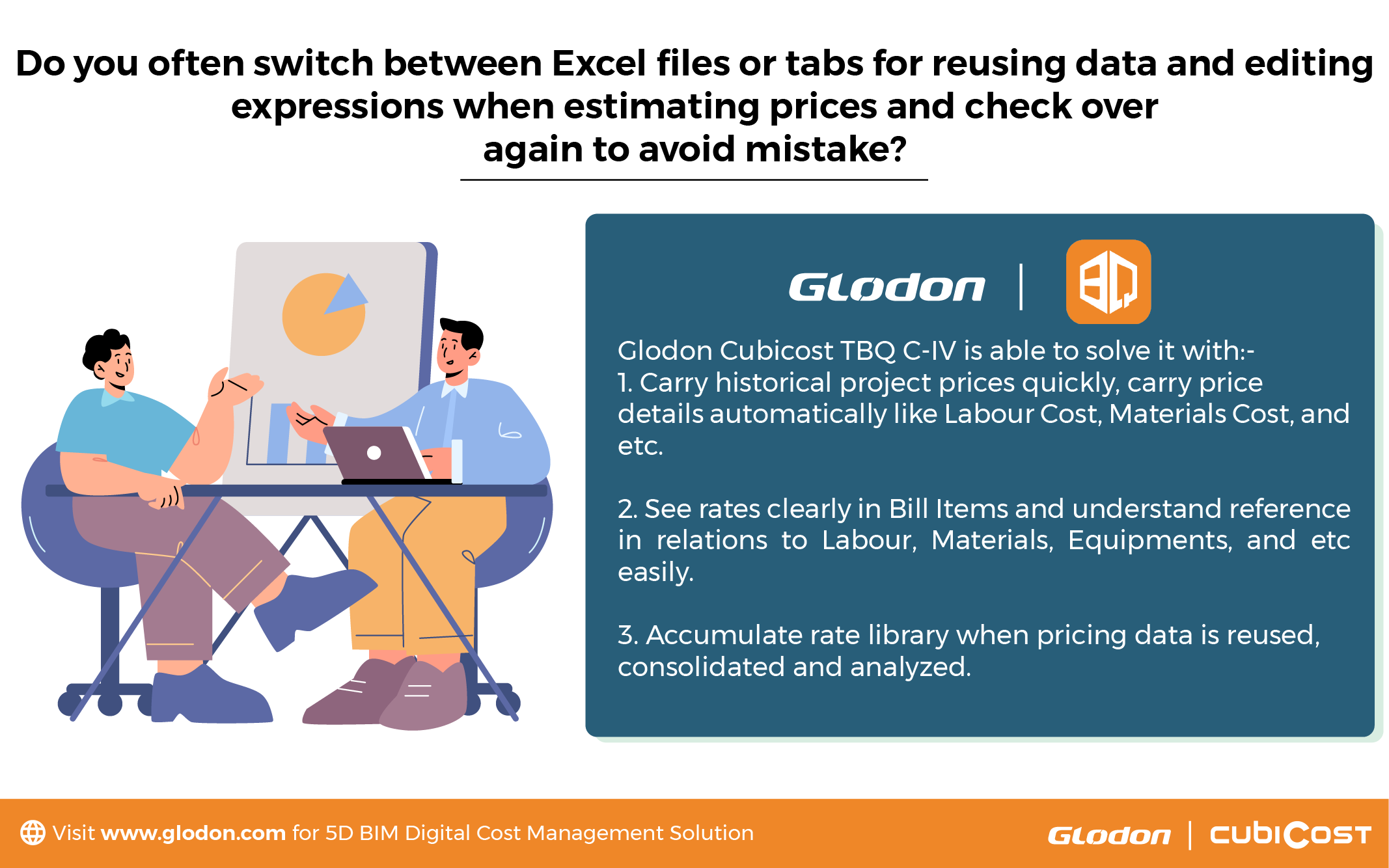With the enhanced awareness of lean management, more and more enterprises in the construction industry have consolidated their scattered project cost data into a centralized system, and the intention is to build their enterprise database for their own. However, due to the lack of standardized data sources and formats, the accumulated data can be hard to analyze and reuse. Hence, the data is unable to fully maximize the value to the enterprises.
By seeing that, we propose a method for new starters to effectively build a digital cost database at an enterprise level. It starts from raising the importance of cost data accumulation and explaining how it could be used in future projects. Then, it elaborates a detailed database building method and introduces a mature product that can help with cost accumulation and application.
Why does the cost database matter?
Have you encountered those scenarios when delivering a construction project?
- As a QS, when a new project comes, and you want to reuse historical project data to do quotation. You may switch between multiple Excel files or tabs to find the related figures. After that, the price needs to be check properly to avoid reference errors.
- As a QS, you are required to analyze the price of a project in multiple dimensions (such as by elements and by trades) and report to your manager. However, with Excel, every figure needs to be manually searched and linked together, which is time-consuming.
- As a manager, you need to assess work prepared by your subordinates and you want to find data instantly to support your decision.
- As a manager, you need to easily identify the person who changed the work to justify the reason of such changes made.
If you are struggling with one of the above, you may still work in the conventional way to manage your cost data. Now, it is about the time for you to know a new system – the digital cost database.

In the traditional working method, cost data is scattered in separate files and the only way to coordinate works is through combining data from multiple sources into one file. Some enterprises may just skip this data consolidation process as it is labor-intensive, and figures could be incorrect due to data loss when transferring and merging files. So, in this kind of working method, the valuable data is not capitalized to its greatest value due to fragmentation.

Workflows will be streamlined by using a systematic cost database. The idea of database is to integrate and standardize cost data with built-in formula and allow users with permission to view and reuse data without digging through various project files. In this case, QS can efficiently search for or reuse data from historical project when a new project starts. And managers can evaluate the rationality of project costing based on more relevant and timely cost data.
What’s more, structured data allows analytic data to be intelligently generated in real-time upon compilation of data completed. As a result, QS do not need to collect and link numerous documents in order to generate the analysis report. Furthermore, linking errors will no longer occur as all calculations are processed by the system iautomatically.
Last but not least, the digital and collaborative environment enables every modification to be traced and viewed. So, next time when a doubtful figure appears, managers could identify the individual who make the changes and justify the work confidently.
How to build a digital cost database at an enterprise level?
The above has explained the importance of a centralized cost database and the idea of digitization. By putting into real world situations, how can enterprises build their own digital cost database?

Step 1: Extract/build standards
A set of standards (e.g. sources, templates, formats, etc.) at the enterprise level need to be unified, which is the foundation of the whole process. This can either be done by extracting standards from historical projects, or building standards from now on if the enterprise is a new starter. Without standards, data will be disarray and cannot be analyzed apple-to-apple in later stages.
Step 2: Store standard data in a centralized environment
It is fundamental that the standardized data must be stored and maintained in a centralized and collaborative platform. And then, this enterprise asset can be used as a reference to guide future projects whenever there is a new project needs to be quoted or the manager wants to evaluate the price of a project.
Step 3: Integrating the database and operating platform
With the integration of the database and operating platform, users will carry out the work based on standards provided. In this case, all project data can be automatically accumulated through daily work. Moreover, thanks to the presence of algorithms, the data stored in the project database is already cleaned, structured, and ready to use.
Step 4: Continuously update enterprise database
After that, users may select the typical project data from the project database to form or update the enterprise database. Then, the typical and organized data can be served as benchmark to guide new projects. As such, the data flow becomes a cycle, and the enterprise database will always be up to date as long as there are new projects added.
Conclusion
A cost database is not just a platform that puts all project data together, but it is also played a role in influencing decision-making process in an enterprise. Without standard sources and formats, data is hard to be applied in future projects and its value is not maximized. By building a cost database in a correct way, enterprise can beneficial significantly from it and develop better analytic for price forecast and budget control. Therefore, cost management can be implemented easily, intelligently, and professionally and enterprise can make better decisions to realize lean management.




